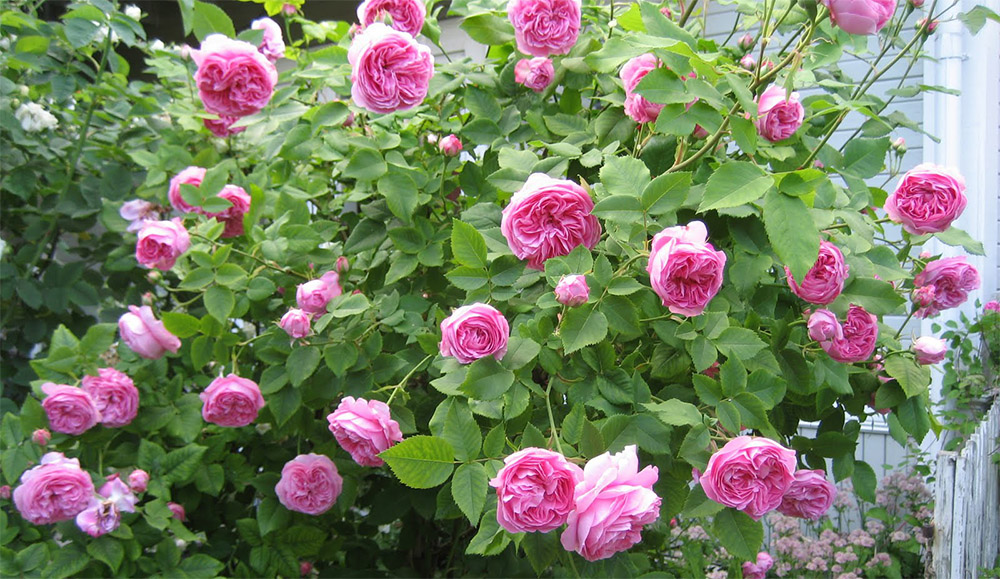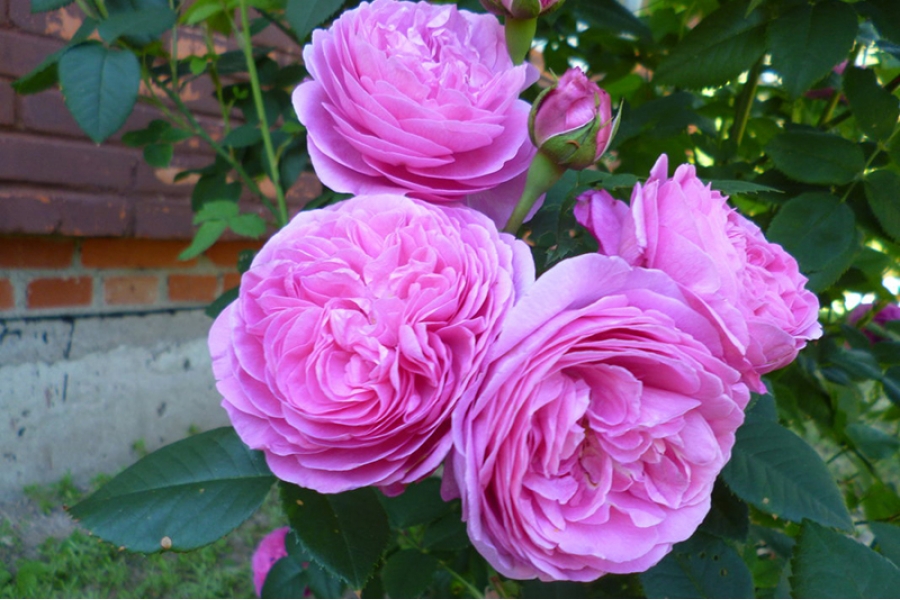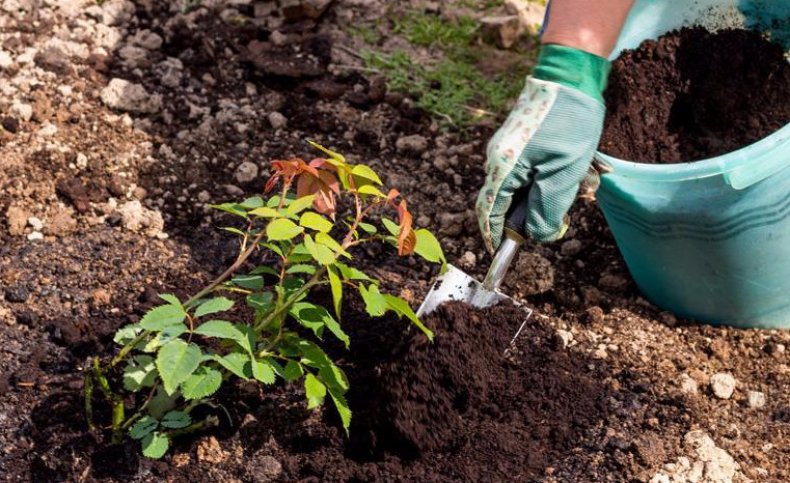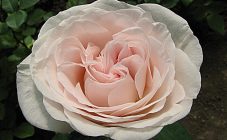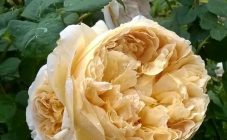Content:
Park roses are an adornment of any garden or square. They are shrubs with dense foliage and a height of up to 1.5 m. They are distinguished by early and abundant flowering, which lasts about a month and begins at the end of May. And by the end of summer and the beginning of autumn they look advantageous thanks to bright fruits and leaves that have begun to turn yellow and red. At the moment, more than 10 thousand varieties of these shrubs are known. Since park roses grow in size with age, not only in height but also in width, they like to grow free.
They are divided into 2 types:
- with a single flowering;
- repeated.
Rosa Louis Audier belongs to the second type. By class, it belongs to the group of bourbon roses from the genus of rose hips. According to legend, one of the developers of this variety was James Odier, who worked in the Bellevue nursery located near Paris. And the rose received the name either in honor of his wife or daughter. Later, he sold the rights to distribute this variety to Margotin, and in the middle of the 19th century, the rose of Louise Odier came to England.
Characteristics of the variety
In the description of this variety, it is indicated that the shoots of the shrub are highly leafy and prickly. It grows in height up to 130 cm, and if the climate permits, then up to 3 m in height and 2 m in width.
Gardeners love this vintage Bourbon variety for its subtle scent, which looks like lemon first, then pink, and for the color of the flower. In the middle, it is deep pink with a lilac tint, and at the edges it is white and pink.
At the initial stage, the flower resembles a peony, then it opens more and more until it looks like a saucer. There are 28 to 56 petals per flower. The rose blooms in waves, flowers can appear in clusters of up to 5 pieces, which is why the shoots bend in different directions, and the bush resembles a flowering fountain. The second wave of flowering occurs closer to autumn, and during the summer the rose releases single flowers.
It has dense foliage of light green color. Light partial shade is not terrible for the bush. Well suited for mild climates, but withstands frosts up to 25 degrees.
These roses look great in tandem with gladioli, poppies, dahlias, begonias. Look advantageous against the background of ornamental deciduous plants such as wormwood, asparagus, gypsophila, hosta. Bushes should not be planted next to plants that have a strong aroma that overpowers the smell of a rose.
Planting and leaving
A sunny, well-ventilated place with fertile soil should be prepared for the queen of the garden.
It is preferable to plant rose seedlings in spring, but if the plant was purchased with a closed root system, you can plant it in the ground throughout the summer period. The best survival rate for seedlings of the first and second years of life. The leaves of the seedling are cut off before planting. When planting, the graft is buried 10 cm in the ground.
In order for the rose bush to grow and develop well after planting, soil is needed:
- loose;
- nutritious;
- easy;
- with neutral pH (6-7).
To plant a seedling, they dig a hole about 90 cm deep and 70 cm wide.If the soil is sandy, then compost, sod soil are added to the hole and a hydrogel is placed on the bottom to retain moisture. Sand, peat, compost are added to the clay. Roses grow best on loam.If planting is done in spring, you can put a spoonful of complete mineral fertilizer directly into the hole, then plant a seedling, water it, cover it with earth. If, when breaking down the rose garden, the bushes are planned to be covered for the winter, they leave a place for laying during planting.
In order for the planted plants to develop well, the following rules must be observed:
- The rose needs rare but abundant watering. For 1 bush, 2 buckets of water are consumed, only in this case the roots will go deep into the ground in search of moisture, and the plant becomes more powerful and strong. If the watering is superficial, then the roots will not go deeply, which is fraught with freezing in the winter and damage in the summer when the soil is loosened under the flowers.
- In the spring, the rose Louis Audier is recommended to be fed with sodium humate or a growth stimulator for better flowering. Throughout the season, park roses are fed with mineral fertilizers 3-4 times. This stimulates the growth of side shoots, increases the splendor of the bush and the number of flowers.
- When shrubs freeze during winter colds, for a faster recovery of green mass, humus is added to the roots in the spring.
- Park roses are very fond of ash, in which there is a lot of potassium, it stimulates the laying of flower stalks for the next year. Ash is simply poured under the bushes or an infusion is prepared from a glass of sifted ash and a bucket of water. Insist 4 hours, loosen the ground under the bushes and feed. In addition, ash increases the pH of acidic soils and makes them lighter.
By the end of summer, the plants stop watering.
Pruning garter, wintering rose bushes
For the first 2 years, the plants are left untouched to give them the opportunity to build up green mass and create a powerful skeleton. During this period, only dried shoots are cut and removed. After three years, pruning is performed for refining, for thinning the plant. And strong shoots are directed in the right direction for further composition creation.
Bushes are pruned in April. To do this, you need a pruner with a long handle and thick mittens. Remove:
- dried and thin shoots;
- shoots growing through the center of the bush;
- all shoots are shortened by 2-3 buds;
- shoots that break out of the total mass of the bush are cut to a size of 60-70 cm;
- completely remove branches growing below the grafting site.
Old bushes or frozen plants are cut off, leaving a stump 15 cm high. This technique stimulates the growth of new shoots.
After cutting each bush to prevent the spread of diseases, garden tools are treated with a solution of bleach. Sections are treated with oil paint or garden varnish. If you want to have a blooming rose arch, then the pergola is dug in next to the bush and the lashes are directed along the arch, tying them to the support bar.
In the northern regions, in order to preserve the variety during the winter, it is sheltered for the winter from frost. In the fall, remove all young shoots, spud the bushes to a height of 20-30 cm, remove the lashes from the support, wrap them with lutrasil, making several holes in it so that the rose breathes. From above, you can fall asleep with spruce branches and dry foliage.
Louise Odier rose propagation
This species, like all roses, reproduces:
- Layers. In the spring, a small groove is dug next to the bush. The lateral shoot is tilted to the ground, laid in a recess, pinned with a hairpin or wooden slingshot where there is a bud with leaves, covered with earth, watered and looked after, like the entire bush. In autumn, the shoot is cut off from the main plant with pruning shears, dug up and divided into pieces so that each has a root. Sprouts are rooted in home flower pots, and planted in a permanent place in the spring.
- Root shoots. Like all roses, Louis Odier produces root shoots. Choose one of the most distant from the mother bush, scoop the ground from the roots, cut the root connecting the shoot with the main plant with a sharp shovel. The shoot is dug up and planted in another place for growing.
- By dividing the bush. An adult bush is dug up, divided into several parts with a shovel and seated in places prepared in advance. Before planting, the roots for disinfection are dipped in a thick solution of potassium permanganate or the pruning sites are sprinkled with ash, the inventory is treated with bleach.
- Cuttings, however, according to gardeners, the Louise Odier rose does not reproduce well in this way. Freshly faded shoots are cut with pruning shears. Cut into several pieces so that each has 3-4 buds. Before planting, special pruning is done. Above the kidney, cut in a straight line, under the kidney - at an angle of 45 degrees. The leaves are cut off, the twigs are soaked for 40 minutes in a solution of Heterooxin (stimulant). Then the cuttings are planted in a nutritious soil (you can at home in a flower pot), watered, covered with plastic bottles or glass jars. The sprout is sprayed every day without watering for 30 days before root formation. If the planting is made in the garden, for the winter they are covered with spruce branches, dry foliage and lutrasil with small holes, and when the heat comes, the seedlings are sent to a permanent landing site.
Advantages and disadvantages
The undoubted advantages include the delicate aroma and the number of flowers blooming at the same time on Luis Odier, the rose pampers summer residents and lovers of rose gardens with beauty all season.
Among the shortcomings noted is the instability of this species to black spot and powdery mildew. To prevent diseases and prophylaxis in a damp summer, the bushes are sprayed with preparations such as Fundazol, Topaz and Skor 3 times, taking a break of 7 days. The variety does not withstand the shade, there it withers, gets sick, blooms poorly.
With proper care, the park rose Louis Audier will become the queen of the flower garden and the source of envy of the neighbors. Due to its frost resistance, it is well suited for the northern regions of Russia.
